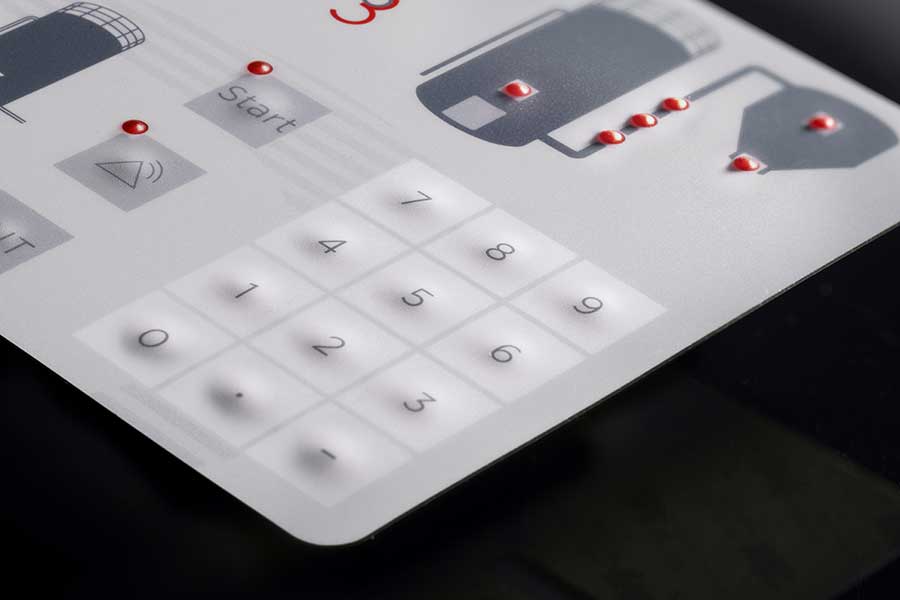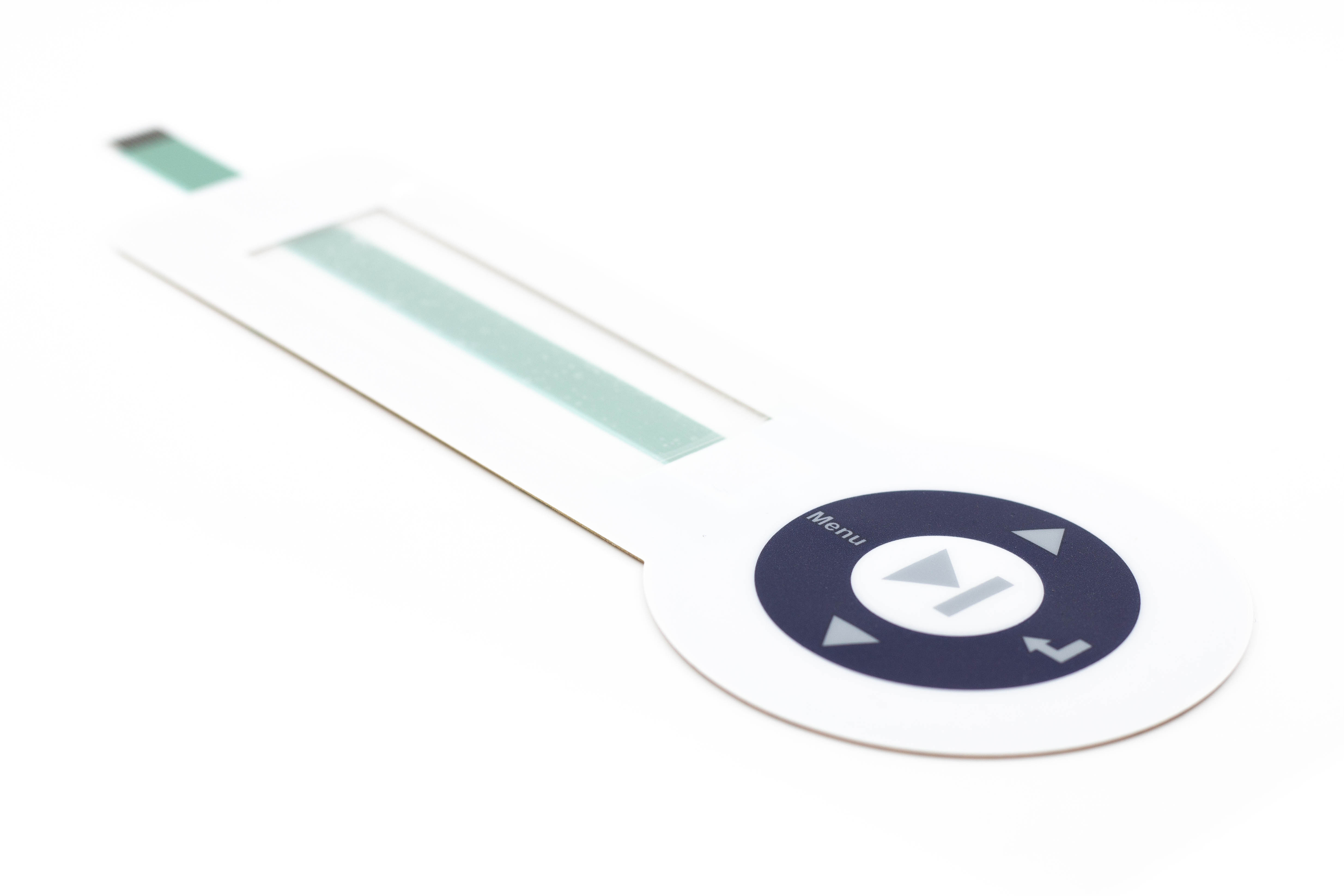Ensuring Quality and Longevity with Membrane Switches in Electronics
Ensuring Quality and Longevity with Membrane Switches in Electronics
Blog Article
Recognizing the Significance of Membrane Switches in Individual Interfaces
Membrane buttons are integral elements in the design of reliable individual interfaces, assisting in not just performance yet also boosting visual appeal and individual communication. As we discover the future trends and numerous advantages connected with Membrane technology, it comes to be clear that these buttons are a lot more than just components; they stand for a merging of development and practicality.
What Are Membrane Switches?

The spacer layer, which has adhesive buildings, permits the splitting up of the circuit layer from the overlay, making sure that the switch stays in a non-activated state up until pushed. When stress is put on the overlay, it presses the spacer layer, linking the space and completing the circuit in the underlying layer. This layout not just decreases the physical space needed for traditional mechanical buttons yet likewise enhances the resilience of the device, as Membrane switches are generally immune to dust, dampness, and various other ecological variables.
Commonly found in applications varying from consumer electronics to clinical devices, Membrane switches are indispensable to contemporary innovation, supplying a effective and easy to use user interface that aligns with modern design demands.
Advantages of Membrane Buttons
While various switch technologies exist, Membrane Switches offer distinctive benefits that make them especially desirable in various applications. One of the primary benefits of Membrane buttons is their small design, which permits space-saving applications in devices where realty is limited. Their slim profile not only enhances visual appeal yet likewise facilitates lightweight building and construction.
One more substantial benefit is their resistance to environmental variables. Membrane buttons are generally sealed versus wetness, dirt, and pollutants, making them excellent for use popular environments, such as clinical devices and industrial equipment. This toughness expands the lifespan of the switch, decreasing upkeep prices and enhancing reliability.
Additionally, Membrane buttons can be customized to meet details design needs, incorporating one-of-a-kind graphics and shades that improve customer communication. Their responsive responses options can also be tailored to provide a satisfying individual experience. Additionally, Membrane buttons are affordable, specifically in high-volume applications, as they can be created successfully.
Applications in Different Industries

In the customer electronic devices field, Membrane switches are widespread in devices such as microwaves, washing makers, and remotes. Their responsive responses and aesthetic choices improve customer experience while providing a sleek, modern-day appearance. In addition, automotive manufacturers use Membrane buttons in dashboard controls and infotainment systems, where room is restricted, and individual interaction is crucial.
Furthermore, the industrial industry leverages Membrane buttons in control panels for machinery and equipment, enabling user-friendly operation in usually rough environments. Their resistance to chemicals and moisture makes sure durability and dependability in these applications. Generally, the flexibility of Membrane Switches adds substantially to their extensive usage, making them vital in different technical domain names.
Layout Factors To Consider for Membrane Switches

When making Membrane switches, several essential considerations must be thought about to make certain optimal capability and user experience. The choice of products is crucial; picking long lasting, top quality substratums can improve the switch's long life and resistance to environmental variables such as dampness and temperature fluctuations.
Second of all, the design of the graphic overlay need to prioritize quality and ease of usage. Symbols and text must be readable, and the layout must help with intuitive communication (membrane switches). In addition, responsive responses is crucial; including a tactile dome or various other mechanisms can enhance the user experience by offering physical confirmation of activation
One more essential Homepage element is the switch's electrical performance. Developers must make certain that the conductive traces are appropriately created to lessen resistance and prevent signal disturbance. This includes examining the needed actuation force and guaranteeing compatibility with the electronic parts they will certainly interface with.

Future Patterns in Membrane Modern Technology
As innovation remains to advancement, Membrane switches are poised to progress significantly, driven by advancements in products and manufacturing strategies. One arising trend is the consolidation of advanced products, such as flexible substratums and conductive inks, which improve resilience and reduce the total weight of Membrane switches. These materials not just enhance the responsive response however additionally permit the design of switches that can endure harsher environmental conditions.
Moreover, the assimilation of touch-sensitive innovations is changing conventional Membrane Switches right into more interactive user interfaces. Capacitive touch sensors embedded within Membrane switch panels can provide a more intuitive and responsive individual experience, lining up with the expanding need for smooth, contemporary styles in consumer electronic devices.
In addition, innovations in printing strategies, such as electronic and 3D printing, allow quick prototyping and modification of Membrane switches. This versatility enables makers to respond quicker to market needs and consumer preferences.
Finally, sustainability is ending up being a considerable focus, with manufacturers discovering green products and processes. As these trends unfold, the future of Membrane modern technology promises improved capability, visual appeal, and environmental responsibility, strengthening their function in click now advanced customer interfaces throughout various sectors.
Verdict
To conclude, Membrane Switches stand for a crucial element in the layout of interface, integrating capability with visual versatility. Their advantages, consisting of toughness and resistance to environmental variables, make them appropriate for diverse applications throughout different markets. Furthermore, thoughtful design factors to consider improve customer communication and experience. As developments in modern technology continue, the advancement of Membrane buttons is anticipated to more improve customer interfaces, driving technology and boosting usability in a progressively complex technical landscape.
Membrane switches are important parts in the design of efficient individual interfaces, facilitating not only capability however also boosting visual appeal and customer interaction.Membrane Switches serve as an important part in different user interfaces, promoting a smooth communication in between customers and digital tools.While numerous switch technologies his explanation exist, Membrane Switches offer unique benefits that make them especially preferable in different applications.In addition, Membrane buttons can be personalized to satisfy certain style demands, integrating special graphics and shades that improve individual interaction.In conclusion, Membrane Switches stand for a vital element in the style of user interfaces, incorporating performance with aesthetic flexibility.
Report this page